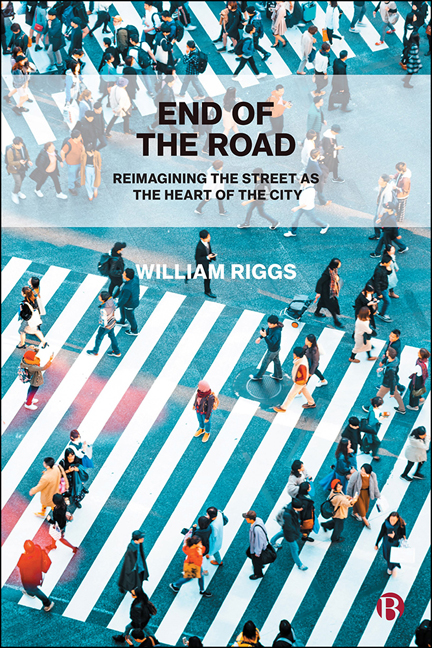Book contents
- Frontmatter
- Dedication
- Contents
- List of Figures and Tables
- Acknowledgments
- 1 Introduction
- 2 A Recent History of the Street
- 3 The Street for Transport
- 4 The Street as Economic Space
- 5 The Street as Social Space
- 6 The Street as Cultural Space
- 7 The Street as a Natural Space
- 8 Challenges to Ending the Road
- 9 Beyond Streets: Integrating Behavior
- 10 A Window into the Future: New Vehicles, New Streets
- 11 A Call to Action: Streets as the Heart of the City
- Appendix
- Notes
- References
- Index
9 - Beyond Streets: Integrating Behavior
Published online by Cambridge University Press: 12 October 2022
- Frontmatter
- Dedication
- Contents
- List of Figures and Tables
- Acknowledgments
- 1 Introduction
- 2 A Recent History of the Street
- 3 The Street for Transport
- 4 The Street as Economic Space
- 5 The Street as Social Space
- 6 The Street as Cultural Space
- 7 The Street as a Natural Space
- 8 Challenges to Ending the Road
- 9 Beyond Streets: Integrating Behavior
- 10 A Window into the Future: New Vehicles, New Streets
- 11 A Call to Action: Streets as the Heart of the City
- Appendix
- Notes
- References
- Index
Summary
Habit is habit, and not to be flung out of the window by any man, but coaxed down-stairs a step at a time.
Nothing so needs reforming as other people’s habits. (Mark Twain, 1894, p 44, 130)
Economic choices are what guide many of our urban experiences. As Mark Twain described, many of the habits that we have that need “reforming” need “coaxing” and those push and pull forces are the basic forces of supply and demand that many of us learn about in introductory economics courses. I sometimes describe those economic choices to my students as being something akin to “the Force” from the Star Wars movies— they are all around us and bind the galaxy together. Almost everything we do can be tied to an economic decision— ranging from where you purchase a house, work or do your shopping to how you choose to travel.
Traditionally, city planners and policymakers have framed these choices based on economic concepts from classic texts such as The Wealth of Nations by Adam Smith (1776). These kinds of books assume that we, as individuals, make rational choices that suit our own self-interests, engage in markets to balance scarcity issues related to supply and demand and that governments sometimes need to step in to make markets better. (Envision how your local farmer’s market creates a place for people to sell vegetables.) While that is a bit of a simplification, what an economist might say would be more candid: simple travel choices are damn complicated.
Think of the choices you make every day and the trade-offs for traveling via walking and biking. For example, have you ever driven less than a mile for an errand even though you could have done it more quickly cycling? Likewise, have you ever idled your car and waited for a parking space (or continued hunting for a parking space in a full garage) when there are parking spaces just a short walking distance away?
I am always surprised when I catch myself behaving these ways because they illustrate that simply creating a marketplace for transportation is not enough.
- Type
- Chapter
- Information
- End of the RoadReimagining the Street as the Heart of the City, pp. 118 - 130Publisher: Bristol University PressPrint publication year: 2022



